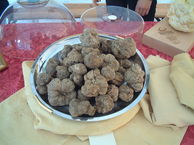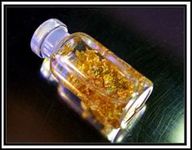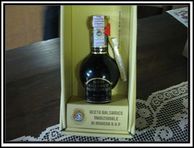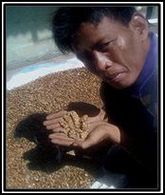World's Most Expensive Ingredients
White Truffles: $800-2000/lb

Photo from Wikimedia Commons
The best and most expensive white truffles come from Piedmont, Italy. Availability is limited to winter months, and the fungus cannot be harvested. They form under the Earth at the base of Oak trees. Truffle harvesting spots are jealously guarded secrets, passed from parents to children. Originally, truffle hunters used female pigs to sniff out truffles, as the scent closely resembles male pig’s sex pheromones. Problem was, pigs also consumed the truffles, reducing yield. Today, hunters use trained dogs, which find and unearth, but do not eat the truffles. In the U.S., imported truffle products are subject to a 100% tariff, along with other E.U. luxury foods. This results in inflated costs for white truffles, compared to other countries.
Edible gold: $90-100/gram

Though gold has no nutritional value, 23k and 24k gold is perfectly edible and add luxurious and beautiful decoration to dishes and drinks. Chefs use gold in desserts, as garnish on wedding cakes, in cocktails and drinks, and on appetizers and entrées. Culinary gold comes in a few forms, including powder, flakes, and sheets, and is a breathtaking garnish.
Saffron: $7-10 per gram or approx $400/lb
Most of the world’s saffron comes from Afghanistan, Greece, India, Iran, Morocco, Spain, and Turkey, though it can grow in other warm climates. The main reason for the high price tag is the time intensive labor involved in picking it and the small yield. The flowers must be handpicked during particular times (which vary by region) and each flower contains only a few stems. It takes around 400 hours to attain 1 kg of dried saffron. A little saffron goes a long way, not limiting the spice to the upper classes. It is common in a wide variety of Middle Eastern and Spanish dishes. The spice has a bitter flavor that slightly resembles bleach, and small amounts of saffron color foods vivid yellow-orange.
Kona Nigari: $16-$17 per fluid oz.
2,000 feet below water levels off Hawaii’s coast, an expensive commodity bubbles upward. No, we’re not talking about deep oil reserves. Hawaiians are drilling for… water? That’s right, the high mineral water sell for top dollar around the world. The luxury water touts numerous health benefits; weight loss, skin health, digestive aid, and stress reduction. 2 oz containers sell for around $33 per bottle, but a little goes a long way. The water is highly concentrated, meant as an addition to a gallon of water.
Aceto Balsamico (Balsamic Vinegar) $100-$300/bottle

True Balsamic Vinegar must be aged a minimum of 12 years in wooden barrels. Artisans press Trebbiano grapes into a must, and then begin the process of reduction. Each year, the grape must is transferred into smaller barrels until it becomes a thick brown syrup. Unlike American varieties, (which mainly consist of dyed red wine vinegars) true Balsamic Vinegar has a sweet, rich flavor suitable for topping ice cream, drizzling across thick red meat, or on an aged cheese. Production is limited to areas surrounding Reggio-Emilia and Modena and the finished product must pass rigorous taste testing by some of the most discerning tongues on the planet. If the Balsamic hopeful meets the approval of all 5 judges, only then producers package it into government controlled 3.4 oz bottles wearing the consortium D.O.P. stamp. True Balsamic only comes in one bottle shape and size; anything else is not an authentic product.
Kopi Luwak Coffee: $33-$100/cup

The world’s most expensive coffee goes through extremely unique processing… through the digestive tract of the Asian Palm Civet. Civets in Indonesia sniff out the best coffee cherries plucking them from branches with razor claws. The civet then eats the beans, excreting them whole. The beans are then thoroughly washed and lightly roasted. According to legend (and coffee aficionados) this process reduces acidity and bitterness, giving the coffee a wonderfully aromatic, smooth flavor. Producers use a variety of beans, so flavor can differ.
